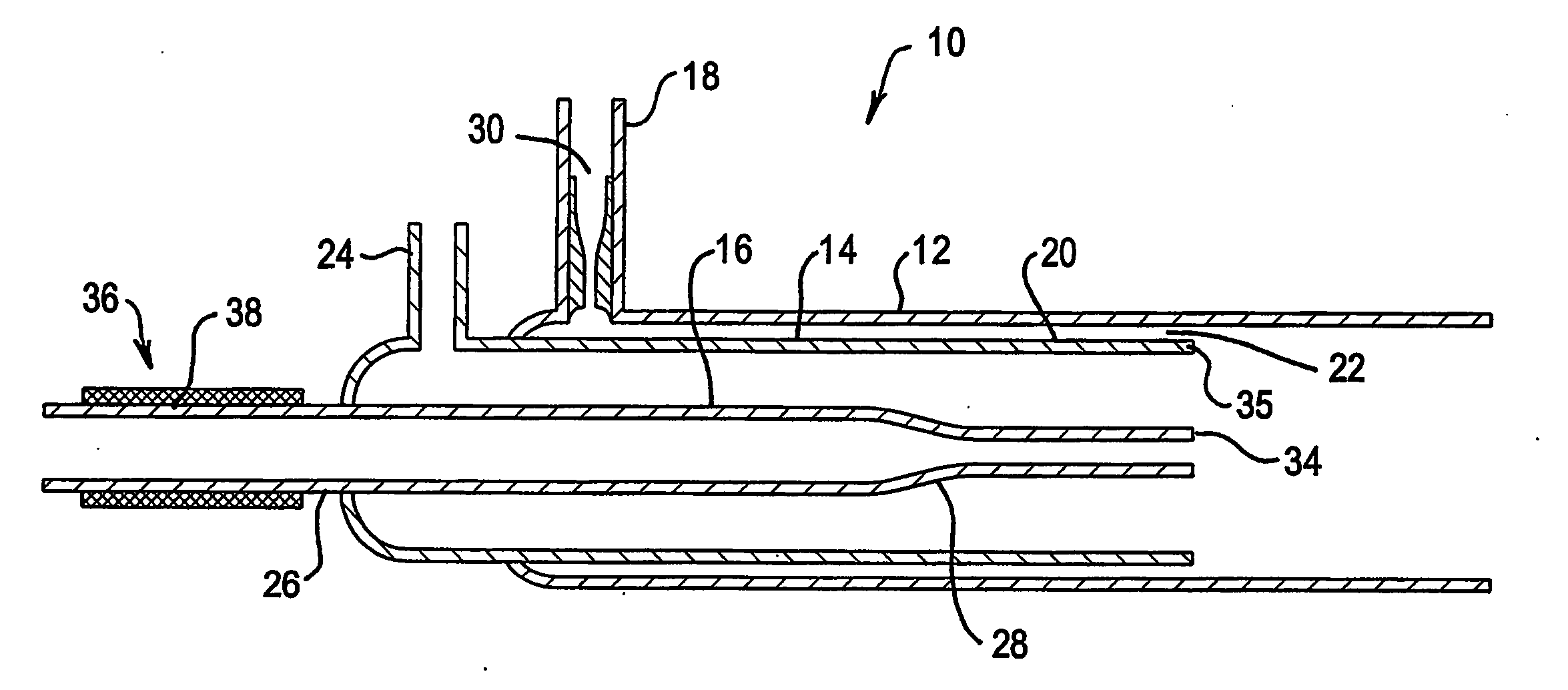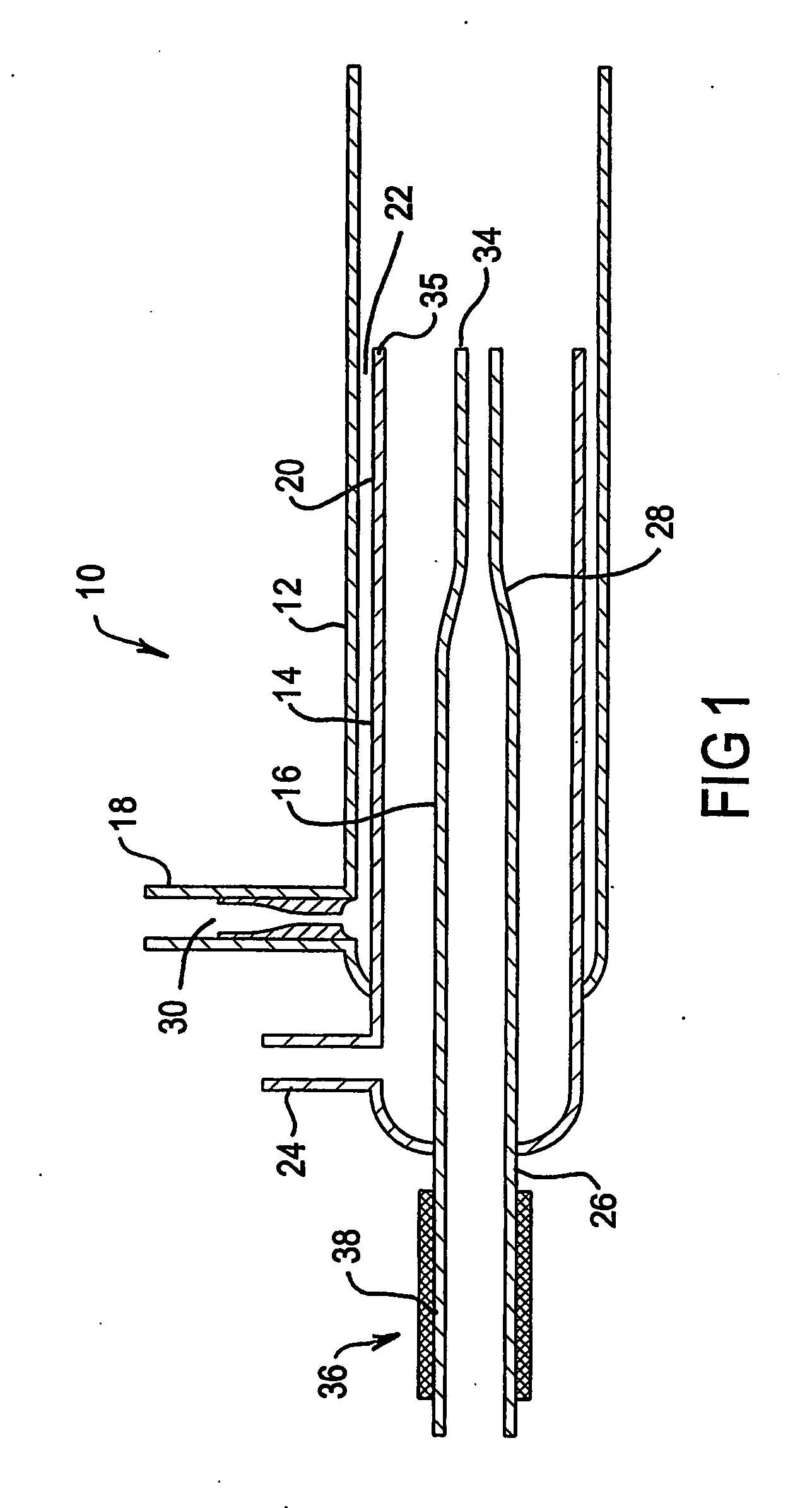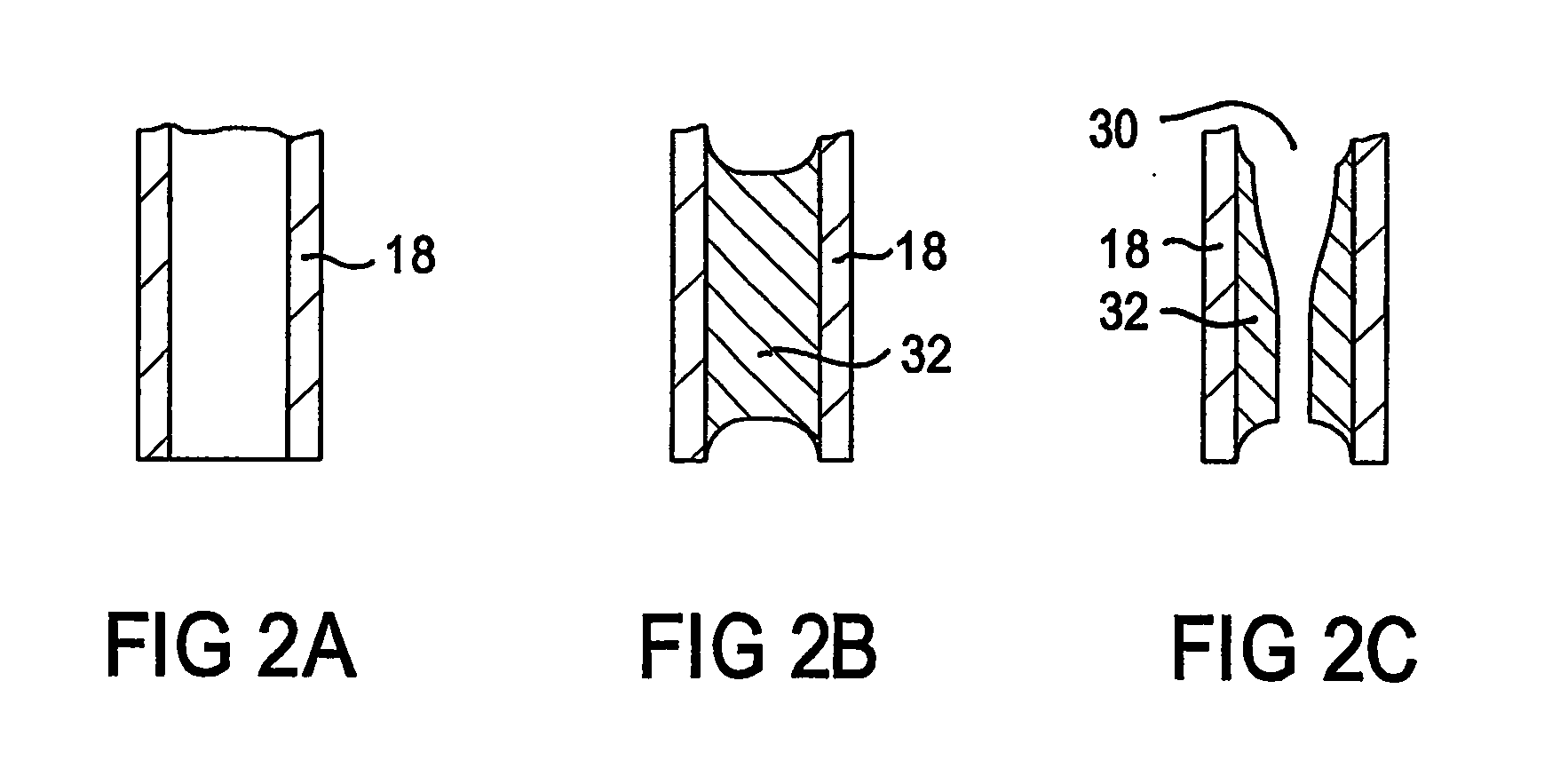Plasma torch for microwave induced plasmas
a plasma torch and microwave-induced technology, applied in the field of plasma torch for microwave-induced plasma, can solve the problems of significantly inferior to icp system, less well-developed micro-ionization plasma (mip) spectrometry, and less well-developed icp system analytical performance, etc., to avoid or avoid sensitivity degradation, slow down the effect of degrading
- Summary
- Abstract
- Description
- Claims
- Application Information
AI Technical Summary
Benefits of technology
Problems solved by technology
Method used
Image
Examples
Embodiment Construction
[0039] A microwave induced plasma torch 10 according to an embodiment of the invention comprises three concentric tubes, typically of quartz, namely an outer tube 12, an intermediate tube 14 and an inner tube 16. The outer tube 12 includes an outer-gas inlet 18 for supplying a gas flow (hereinbefore “a third gas flow”) between the outer tube 12 and the intermediate tube 14. The intermediate tube 14 has an end section 20 which together with the outer tube 12 defines an annular gap 22 for passage of the third gas. The third gas flow between the outer and intermediate tubes 12 and 14 (termed the main flow or plasma support gas flow) establishes a sheathing gas layer for a microwave induced plasma produced in the torch which separates the microwave induced plasma from the inner surface of the quartz outer tube 12 and thus stops this tube from melting. The outer-gas inlet 18 is arranged for the gas to be injected offset from the centre line of the torch such that the flow spirals or spin...
PUM
| Property | Measurement | Unit |
|---|---|---|
| frequency | aaaaa | aaaaa |
| frequency | aaaaa | aaaaa |
| pressure | aaaaa | aaaaa |
Abstract
Description
Claims
Application Information
 Login to View More
Login to View More - R&D
- Intellectual Property
- Life Sciences
- Materials
- Tech Scout
- Unparalleled Data Quality
- Higher Quality Content
- 60% Fewer Hallucinations
Browse by: Latest US Patents, China's latest patents, Technical Efficacy Thesaurus, Application Domain, Technology Topic, Popular Technical Reports.
© 2025 PatSnap. All rights reserved.Legal|Privacy policy|Modern Slavery Act Transparency Statement|Sitemap|About US| Contact US: help@patsnap.com



